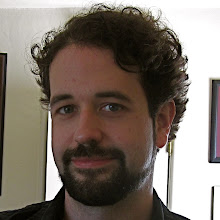1.) Explanation: Can the student construct a meaningful theory for why the facts are what they are? Understanding the situation means grasping the mechanism behind the observed events.
2.) Interpretation: What is the meaning of the observed events or narrative? An abstract theory (Explanation) can describe the general reasons for how things happen the way that they do, but interpretation means looking beyond mechanism to the deeper implications, be they philosophical, moral, sociological, etc. Interpretations are provisional by their nature; different people may look at the same situation, or the same theoretical construct, and have very different ideas about its meaning. The vehement disagreement among physicists about the interpretation of quantum mechanics is a good example of this.
3.) Application: If you really understand something, you can take the knowledge you've acquired on the subject and apply it in new situations. You should be able to perform novel, creative work that demonstrates what you've learned.
4.) Perspective: Understanding a situation means being aware of the importance of a person's point of view and how that affects their interpretation of the data. To go back to the quantum mechanics issue, it's helpful to know what metaphysical and philosophical baggage are being carried around by the proponents of the different interpretations, and how that influences their thought. A person who advocates the Copenhagen interpretation (that there is only one universe, and that the wave functions of quantum mechanics represent probabilities that "collapse" when we finally make a measurement) is necessarily coming at the problem from a different viewpoint from someone who advocates the many-worlds interpretation (that the probabilities of the wave functions actually describe the frequency with which different results occur across an infinite number of universes).
5.) Empathy: While perspective is the ability to judge alternate viewpoints from outside, with a detached, critical eye, empathy is the ability to get inside another person's POV and see why they hold that viewpoint. Since many "Big Ideas" are confusing, counterintuitive or crazy-sounding when you first encounter them, you often have to suspend your own judgments and put yourself in the thinker's perspective before you can really "get" those ideas. Otherwise you risk discarding important concepts because they don't fit in with your preconceived notions of the world.
6.) Self-Knowledge: In addition to understanding others' viewpoints, you have to understand your own viewpoint. Everybody looks at the world through a filter, unconsciously omitting or discounting data that do not coincide with their worldview. Self-knowledge means that you're aware of your filter and making a conscious effort to consider perspectives that lie outside it, or even conflict with it completely.
"Our intellectual blind spots predispose us toward intellectual rationalization: the ability to unendingly assimilate experience to beliefs and to categories that seem not merely plausible ideas but objective truths. Too easily, we keep verifying our favored and unexamined models, theories, analogies, and viewpoints." (p.101)
This sort of self-blindness is the bane of good science -- or, for that matter, good scholarship in any subject. The first and greatest mistake many researchers make is to assume that they are impartial observers, that they are completely fair and even-handed. It's not just scientists who have this problem, either; we've all seen examples of how biased reporters can be, even when they repeatedly proclaim that they are "objective" or "fair and balanced."
The first three facets are what I would call "external" aspects of understanding; these are the facets that my students can directly apply to the material of the course itself. I can help my students learn how to grasp the theory behind biological processes, to interpret the deeper implications of those theories, and to apply them to new problems. The other three facets are "internal" aspects of understanding: they concern the students' understanding of how they understand the material. The "Big Idea" of Resource Cycling & Flow in Ecosystems is an objective process that can be Explained, Interpreted and Applied, but it doesn't have an inherent perspective attached to it that must be perceived or empathized with; rather, students will need to apply these three latter facets of knowledge to the interpretations of this process, both the ones that are presented by experts and the ones that they come to for themselves. For example, the objective existence of the Nitrogen Cycle leads to a possible interpretation that humans need to stop dumping nitrogenous agricultural runoff into our lakes and rivers, because this excess nitrogen is throwing natural systems out of balance. Students will need to have the Perspective to analyze the arguments of environmentalists and the agricultural industry about this question, the Empathy to appreciate why each side views this situation the way that they do, and the Self-Knowledge to see how their own biases affect their opinions on the situation.
All of these facets of understanding work together to lead to what I have previously described as "critical thinking." I'm glad to see them described explicitly in such detail; it will be a big help to me as I figure out what sorts of assessments and lesson plans will engage these different styles of thinking.

No comments:
Post a Comment